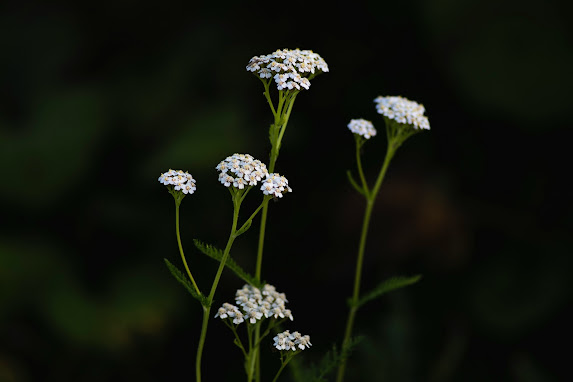"Achillea Millefolium (Yarrow/Rajmari): Health Benefits and Uses"
Introduction
Achillea millefolium, sometimes called Rajmari in traditional Ayurvedic medicine and widely known as yarrow, is a perennial herb with a wide range of medicinal uses. For millennia, different cultures have used the hardy plant with feathery leaves and clusters of pink or white blooms for medicinal purposes. This page examines Achillea millefolium's historical usage, active ingredients, and contemporary uses.
Historical and Traditional Uses
Yarrow has long been used in traditional medical systems all across the world. Rajmari is prized in Ayurvedic medicine for its adaptability in treating a variety of illnesses. Yarrow was used by the ancient Greeks, notably the well-known physician Hippocrates, to treat wounds and lower inflammation. The herb was used for similar purposes by Native American cultures, such as reducing fever and relieving pain.
Active Components
Achillea millefolium is thought to possess a wide range of bioactive chemicals that contribute to its therapeutic qualities. These include:
Flavonoids: These antioxidants aid in the reduction of inflammation and shield cells from oxidative harm.
Alkaloids: The analgesic and anti-inflammatory properties of alkaloids are well-known.
Sesquiterpene Lactones: Sesquiterpene lactones are substances with anti-inflammatory and antibacterial properties.
Tannins: These antibacterial and astringent substances aid in the healing of wounds.
Essential Oils: Camphor and chamazulene are included, which help to give it antibacterial and anti-inflammatory qualities.
Therapeutic Benefits
Wound Healing: Yarrow's astringent and anti-inflammatory qualities have long been used as a poultice to help stop bleeding and speed up the healing process.
Digestive Health: Yarrow has been shown to improve diarrhea, cramping, and bloating while also increasing appetite. Its bitter ingredients improve digestion by stimulating the flow of bile.
Anti-inflammatory: Because of the herb's ability to reduce inflammation, it can be used to treat ailments including arthritis and respiratory problems by easing pain and swelling.
Menstrual Relief: Because of its antispasmodic properties, yarrow is frequently used to control menstrual cycles and ease cramps.
Immune Support: Yarrow's antibacterial qualities enable it to effectively strengthen the immune system and fend off illnesses.
Fever Reduction: Yarrow has long been used to induce sweating in order to lower fevers.
Modern Applications
Achillea millefolium is still a mainstay in modern herbal medicine. It frequently appears in:
Tinctures and Extracts: Internal remedies for menstruation and intestinal disorders include tinctures and extracts.
Topical Ointments: Administer Topical Ointments: On wounds, contusions, and inflammations.
Teas: Drinking tea has been shown to improve overall health, especially the immune system and digestive system.
Essential Oils: Essential oils are used in cosmetics and aromatherapy because of their calming and restorative qualities.
Safety and Precautions
Although yarrow is usually thought to be harmless for most people, those who are allergic to plants in the Asteraceae family may experience adverse reactions. Because yarrow may affect menstrual cycles, it is also advised that pregnant and nursing people stay away from it. Before beginning any new herbal medication, make sure you speak with your healthcare professional.
Conclusion
One particularly effective herbal treatment with a broad range of uses, from wound healing to digestive health, is Achillea millefolium, often known as Rajmari. Its effectiveness and adaptability are highlighted by its lengthy history and ongoing usage in contemporary herbal medicine. Under the right supervision, adding yarrow to your wellness regimen can provide a number of health advantages as well as a natural method of healing.




Comments
Post a Comment